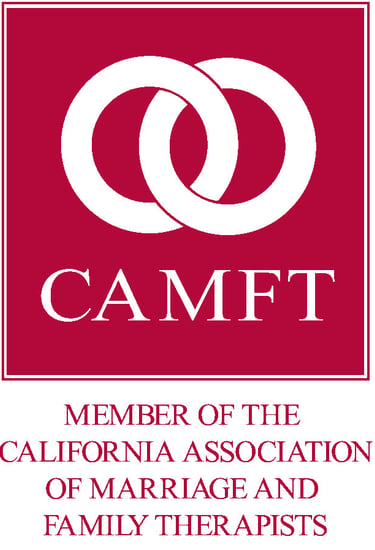Longing for Daddy: Gay Desire, Generational Wounds, and the Therapy Room
Explore the complexities of cross-generational desire, queer longing, & the impact of the AIDS crisis in this reflective article on “daddies,” intimacy, & healing within the LGBTQ+ community. Includes prompts for self-inquiry & details on a new queer kinship group in San Francisco.


Many queer men wrestle with a deep, often unspoken longing—for mentorship, intimacy, protection, and tenderness from older men. The term “daddy” carries a potent cultural charge. For some, it signals erotic fantasy. For others, it speaks to the grief of lost connection, missed guidance, or the longing for a paternal figure who never truly showed up.
This desire isn’t always about kink, though it can be. Sometimes it’s about safety. Sometimes it’s about grief. Often, it’s about the ache of something that was never fully allowed or acknowledged. And yet, in much of mainstream culture, especially within certain gay communities, this desire remains fraught with shame, fear, or outright dismissal.
In Father Figure: On Dangerous Daddies and Cross-Generational Desire, psychologist Stephen Lugar reflects on the emotional complexity of cross-generational longing. Through personal memory and clinical observation, he traces the ways gay men’s desires for father figures have been policed—by family systems, by cultural taboos, and by the legacy of the AIDS epidemic.
The Taboo of Wanting
The essay discusses how longing for fatherly affection can become infused with shame, especially when eroticized. Some people can’t imagine this kind of desire without associating it with transgression. This discomfort often emerges not from the desire itself, but from a cultural script that equates emotional vulnerability and physical closeness with something dangerous or perverse.
Our culture’s strong—and warranted—taboos around incest exist to protect against profound harm. Yet at a societal level, this sensitivity can sometimes become so heightened that it shuts down reflection on more nuanced, or non-violent forms of cross-generational closeness. In the resulting atmosphere of shame, even healthy instincts for intimacy, mentorship, or tenderness across age differences can be misunderstood or denied. The fear of being “too close” to a father figure leaves many gay men feeling emotionally orphaned—yearning for something they were never allowed to name.
Twin Peaks Tavern & the Legacy of AIDS, Visibility, & Intergenerational Longing
Lugar writes about Twin Peaks, a historic gay bar in San Francisco—nicknamed the “Glass Coffin”—where older men gather daily. In 2013, when the article was written, Lugar shares that reactions to this space tended to split: some describe it with discomfort or even revulsion, while others speak of it as a place of safety, sweetness, and memory. These conflicting responses reveal just how uneasy society is with age, vulnerability, and history—especially when queerness is involved.
Known formally as Twin Peaks Tavern, this iconic Castro bar opened in 1935 as an Irish pub and became a quiet site of queer resistance decades later. In 1972, it was taken over by Mary Ellen Cunha and Peggy Forster, two lesbian friends who made history by removing the window coverings the following year—making it the first gay bar in the U.S. believed to openly reveal its patrons to the outside world. At a time when being seen inside a gay bar could lead to job loss, violence, or social rejection, this act was radical. The tavern’s enduring interior—a U-shaped bar, mirrored backbar, and partial mezzanine—carries a legacy of defiance and quiet pride.
Today, Twin Peaks stands not just as a neighborhood bar, but as a quiet monument to queer endurance, generational continuity, and the long arc of visibility hard-won. It’s a place that reflects back the resilience of those who gathered there through eras of fear, loss, and transformation—including the height of the AIDS crisis. Its mirrors and wide-open windows hold more than reflections; they hold memory. In its stillness and warmth, Twin Peaks invites a kind of reverence—for what was, for who survived, and for the connections still possible across time.
You can see a glimpse of this ongoing legacy in the recent KQED Instagram short, which profiles the tavern’s place in San Francisco’s LGBTQ history.
Reclaiming Longing and Connection
Lugar’s essay challenges readers to reclaim their longings—not to act them out indiscriminately, but to understand them. To see desire not just as sexual, but emotional, cultural, and historical. For queer people, especially gay men, cross-generational desire can be a path to healing: a way to grieve the losses of the past, to restore continuity, and to rediscover connection.
This kind of reflection opens a door not just to personal insight but to broader community healing. It invites queer people to honor their longing—for mentors, for lovers, for wisdom, for care—and to see these desires not as evidence of dysfunction, but as part of what makes us deeply human.
Points for Reflection, Self-Inquiry, or Journaling
These questions are offered as gentle invitations into self-exploration. They may be used as prompts for journaling or simply as meditative reflections over time. And, a point of consideration: No one is necessarily immune to homophobia, misogyny, and transphobia and the accompanying feelings of shame. These are widespread messages in our culture - explicit or implicit. This idea might be something to hold while contemplating these prompts.
What emotions come up when I hear the word “daddy”? What memories or associations arise?
Have I ever longed for an older mentor, guide, or lover? What is the experience of longing like? What are the thoughts, feelings, and sensations associated with this?
Are there ways that shame shaped my understanding of desire—especially desire that crosses age or power lines?
What stories or messages did I internalize during the AIDS crisis or from older queer narratives?
Are there ways I’ve distanced myself from elders in the queer community—and what might it mean to move closer?
What does queer kinship look like for me now? What kind of intergenerational connection do I want to cultivate?
If these reflections resonate, you might be interested in a new offering: an intergenerational queer kinship group for LGBTQIA2S+ folks of all ages. The group centers on connection, healing, and shared wisdom across generations. You can learn more here: erikkarffpsychotherapy.com/lgbtq-therapy-group.
If you are interested in learning more or pursuing individual or couple therapy, click here now to schedule a free consultation.
This piece is the first in a two-part series on cross-generational desire and connection in queer life. For a deeper exploration of how these relationships can foster healing, vitality, and mutual care, read the follow-up article: Not Just a Fantasy: Real Relationships with Gay Daddies and Older Partners
Citation:
Lugar, S. (2013). Father Figure: On Dangerous Daddies and Cross-Generational Desire. Studies in Gender and Sexuality, 14(2), 153–157. https://doi.org/10.1080/15240657.2013.791603





